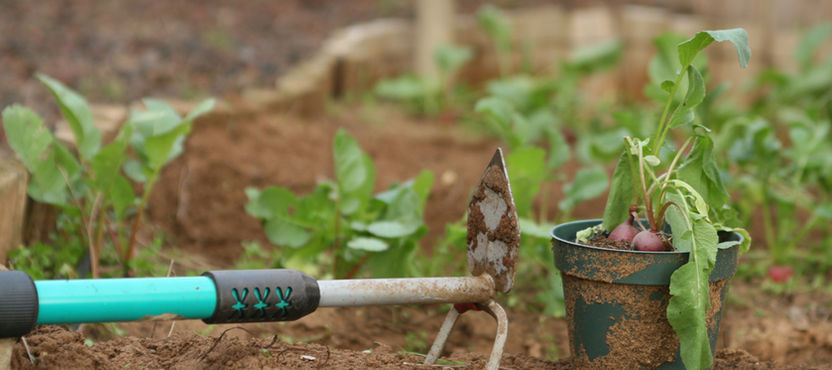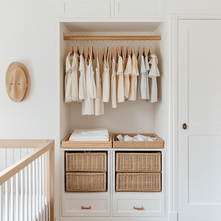The Beginner’s Guide to Vintage Home Decorating: Where to Start
- Beril Yilmaz
- Feb 10
- 4 min read
Vintage home decorating has a certain magic that modern styles just can’t replicate. There’s something about the warmth of aged wood, the charm of hand-crafted details, and the nostalgia of timeless pieces that makes a home feel uniquely personal. But while vintage decorating might seem effortless, curating a space with antique and retro finds takes some strategy.
With the right approach, you can blend eras, mix textures, and create a space that feels both curated and lived-in. Whether you’re drawn to mid-century modern furniture, rustic farmhouse accents, or Victorian elegance, this guide will walk you through everything you need to know about vintage home decorating—from sourcing treasures to styling them like a pro.
Ready to bring history into your home? Let’s dive in.
1. Vintage Home Decorating: Define Your Aesthetic

Before you start collecting pieces, it’s important to define your vintage aesthetic. Are you drawn to the elegance of the 1920s Art Deco era, the rustic charm of a farmhouse, or the bold colors of the 1970s? Take time to research different design periods and determine what speaks to you.
Here’s how to find your vintage style:
Look through old interior design magazines or Pinterest boards for inspiration.
Identify your favorite decades and themes. Mid-century modern? French country? Industrial vintage?
Take inventory of what you already own that could fit into your vintage decor vision.
Mix and match eras carefully. A little contrast adds interest, but too many styles can feel chaotic.
Once you’ve settled on a look, it’ll be much easier to shop and style your space with confidence.
2. Vintage Home Decorating: Where to Source Timeless Treasures

Finding the perfect vintage decor pieces takes time and patience. While thrift stores and flea markets are classic go-to spots, there are plenty of other great places to score one-of-a-kind finds.
Some of the best sources include:
Estate sales & garage sales: These can be goldmines for unique furniture, artwork, and home accessories at great prices.
Local antique shops: Though prices can be higher, antique dealers often curate high-quality, authentic pieces.
Online marketplaces: Check out Facebook Marketplace, Etsy, eBay, and Chairish for unique vintage furniture and decor.
Architectural salvage yards: If you’re restoring a home or want vintage doors, mantels, or light fixtures, these places are perfect.
Your own family: Heirlooms and hand-me-downs add personal history to your decor and often come with sentimental value.
Wherever you shop, take your time—hunting for vintage pieces is part of the fun!
3. Vintage Home Decorating: How to Spot Quality Pieces

Not all vintage furniture and decor are created equal. Before making a purchase, inspect pieces carefully to ensure they’re worth bringing home.
Here’s what to look for:
Solid wood construction: Avoid flimsy particleboard or MDF.
Sturdy joints and hardware: Look for dovetail joints, mortise and tenon construction, and original hardware.
Minimal damage: While some wear adds charm, avoid pieces with major structural issues, mold, or pests.
Brand markings or labels: These can help you identify the maker and age of a piece.
Handmade craftsmanship: Hand-carved details, original upholstery, and unique finishes often indicate higher quality.
A little research goes a long way—knowing what to look for can help you make smarter vintage investments.
4. Vintage Home Decorating: How to Incorporate Old with New

Balancing vintage pieces with modern elements is key to avoiding a home that feels like a museum. Mixing old and new creates a dynamic, layered look that feels fresh and inviting.
Here’s how to do it:
Pair vintage furniture with contemporary accents. A sleek, modern sofa can complement an antique coffee table beautifully.
Use vintage textiles to add character. Vintage rugs, quilts, or curtains can add warmth to a modern space.
Incorporate modern lighting. A vintage chandelier looks stunning when contrasted with minimalist decor.
Blend finishes and materials. Try mixing distressed wood with polished metal or aged brass with glass.
This mix keeps your space feeling curated and intentional rather than outdated.
5. Vintage Home Decorating: Refresh & Restore Your Finds

Sometimes, vintage pieces need a little TLC before they shine. Whether it’s refinishing a dresser or reupholstering a chair, small updates can make a huge difference.
Consider these restoration tips:
Clean thoroughly. Dust, polish, and deep clean every item before placing it in your home.
Update hardware. Swapping out old knobs and pulls can instantly refresh a piece.
Refinish or repaint furniture. A coat of paint or stain can bring new life to worn wood.
Reupholster fabric pieces. New fabric on chairs or sofas can completely transform them.
A little effort can turn a forgotten antique into a showstopping statement piece.
6. Vintage Home Decorating: Small Touches Make a Big Impact

Even if you don’t want to overhaul your whole home, small vintage accents can still add charm and personality.
Try incorporating:
Vintage mirrors to add depth and light.
Old books stacked on coffee tables or shelves.
Retro kitchenware for a nostalgic feel.
Framed vintage artwork or postcards for unique wall decor.
Antique clocks, candlesticks, or vases as eye-catching accessories.
These small details can make a huge difference without requiring a complete room makeover.
FAQs: Vintage Home Decorating
Q: How do I mix vintage with modern decor?
A: Stick to a consistent color palette and use a few vintage statement pieces rather than overloading your space with antiques.
Q: Is vintage furniture more expensive than new furniture?
A: Not always! While some designer antiques are pricey, you can often find high-quality vintage furniture at thrift stores and estate sales for a fraction of the cost of new pieces.
Q: How do I know if something is truly vintage?
A: Look for maker’s marks, original materials, and signs of age like natural patina or craftsmanship that isn’t found in mass-produced modern furniture.
Q: Can I mix different vintage styles together?
A: Absolutely! Just make sure to balance different eras with a unifying color scheme or complementary materials.
Looking to create a beautiful, timeless home with vintage charm? At BY Design And Viz, we specialize in interior and architectural design that blends old-world elegance with modern functionality. Whether you need help sourcing vintage pieces, styling your space, or designing a historically inspired renovation, our experts are here to bring your vision to life.
Contact us today to schedule a consultation and start your journey toward a perfectly curated vintage home!
























